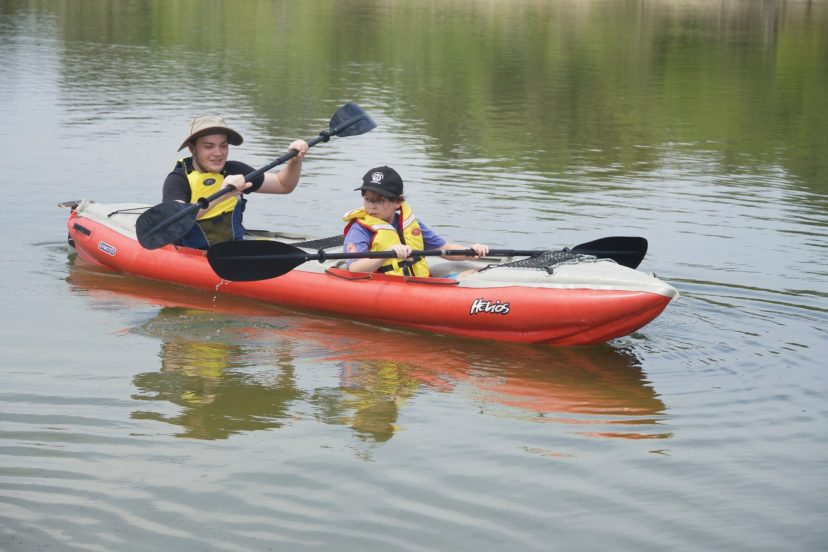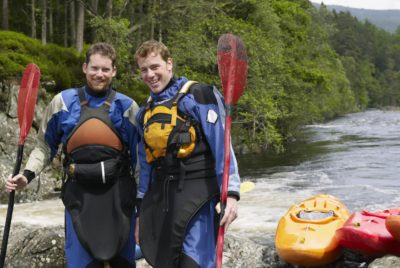Top 9 Inflatable Kayaking Beginner Tips

When it comes to picking from the different types of kayaks, one of the most popular ones are inflatable models. Inflatable kayaks give you the freedom of taking them wherever you want to go for paddling, and you don’t have to worry about their size.
Before you embark on your next inflatable kayaking adventure, make sure that you read through these useful tips that will surely help you to enjoy the great outdoors.
9 Tips Every Inflatable Kayak Starter Needs To Know
1. Make Sure You Thoroughly Check Your Packing Before You Leave
What happens when you reach your serene kayaking destination and end up forgetting an essential item? Well, that is why it is highly important that you double check all of your kayaking equipment before you leave your home.
Items, such as your life vest, the paddles, the inflation pump, and the actual inflatable kayak itself are essential if you want to have a safe and enjoyable kayaking experience. One thing you can do is to make a checklist before you step out with your equipment, so you won’t forget anything. It also helps if you store everything in the same location as before.
A consistent routine will lower the chances of you forgetting an important item at home.
2. Analyze All Transporting Conditions And Water Access Points
Transporting an inflatable kayak is a lot easier as compared to a hard shell kayak. Because of this, you can access the more secluded bodies of water, with a lot more launching and also take-out points.
Therefore, it is always helpful to locate all of the possible paths and water access points on a map before your trip, either in person or online. Or else, you might end up with a lot more transport hiking than you need. This is true particularly for the bodies of water that are more secluded.
So, it is best to do your research and make a proper plan in order to avoid getting lost. Plus, you might have to pass through other unforeseen obstacles, such as rough land, annoying insects, and dense vegetation.
3. Create An Equal Balance Once You Inflate And Pack Things In Your Kayak
It is the paddler’s job to make sure that their kayak maintains its balance once it’s inflated and all of the equipment is placed inside. When you inflate the kayak to form its shape and only eyeball the inflation levels of the compartments, then there is a possibility that you end up with an unbalanced kayak on the water.
Therefore, you need to apply a little bit of pressure on its sides in order to get a better idea of how much air is inside. If your inflatable kayak came with a tool to measure the pressure, then it’s best to use that.
You need to make sure that you balance the weight equally inside your inflatable kayak, and that includes yourself as well.
4. Learn How To Use The Patch And Repair Materials In Case Of Emergencies
Even though inflatable kayaks are made with sturdy and tough materials, they can still get damaged. Due to its sturdy material, it is quite difficult to puncture a hole or rip your inflatable kayak.
However, there are moments when accidents do happen and you have to be prepared for all kinds of situations once you take your kayak out for some paddling. Most inflatable kayaks come with a handy patch and repair kit that has everything that you need in case of an emergency.
Make sure you study those patch and repair materials and learn the process of how you can fix a potential issue. Every process is different for every kayak. So make sure you learn the one that’s appropriate for yours.
Once you put in the time to learn and practice the whole thing, you are going to be ready to face whatever kayak related obstacle you might come across, whether it’s on or off the water. Not to mention, it will put your mind at ease and take away any anxiousness that might have been there before.
5. Change The Footrests And Seating Of Your Inflatable Kayak On Land
Examine the kayak’s configuration before you take it out on water. Certain kayaks have two or more settings for adjusting your seat. Plus, the footrest, commonly known as foot pegs, can also be adjusted to the way you want.
Moreover, the foot straps of the kayak might also be adjustable. You need to make sure that once you sit inside, you are comfortable from all possible areas.
6. Get Familiar With How You Can Enter And Exit Your Kayak Safely
You can try various basic techniques that are out there when it comes to entering and getting out of the kayak. It is going to help you greatly if you learn these techniques prior to taking your kayak out for an adventure.
Make sure you practice them on dry land at first and once you understand how these techniques are performed then you can practice on the shore of a river. Getting in the kayak can get a bit complicated, but it’s nothing that a couple sessions of practice can’t fix.
It can be hard when you don’t have anything you can hold onto, such as a log, a rock, or even a friend. Firstly, you need to move the kayak onto the water. It should be deep enough so it won’t get stuck once you sit in it.
After that, grab your paddle in one hand and stand over the kayak in such a way that the kayak is between your legs and the seat is right under you. Obviously, your feet are going to get wet. Hence do wear suitable shoes, like sport sandals or water shoes.
Next, position the paddle, that you’re holding, behind you and put it to the ground so you can balance yourself a bit. Make sure that you don’t put a lot of pressure on the paddle since it might break.
Then, carefully lower yourself and sit on the seat of the kayak, and shift your weight on one foot as you balance yourself using the paddle. Finally, carefully put in your other leg into the kayak until you’re comfortably sitting inside it.
7. Use Your Kayak On Calmer And Smaller Waters Prior To Moving On To Rougher Ones
For a beginner who just ventured into the world of paddling, smaller and calmer bodies of water are much more suitable. There are a lot of factors to consider when one is paddling, such as movements and positioning.
Plus, it will take some time to learn the actual paddling itself in order to become more efficient in it. Some bodies of water are a lot rougher than others, and come with various intensities.
When it comes to paddling, a small still lake will feel a lot different compared with rough river rapids. Even though rougher waters might offer a more exciting experience, it requires you to know a lot more techniques in order to maneuver safely and you can only learn those techniques with practice.
Therefore, it will take time to gain the experience you need before you should tackle rougher waters.
8. Take Someone Experienced With You When You Explore New Waters
Someone who is highly experienced will also hesitate before tacking on unfamiliar waters. However, if you are heading out for relatively calm and small waters, it does not necessarily require you to take an experienced paddler with you, even if it is the first time.
These types of waters can be explored all on your own. On the other hand, if the location you are going to is known to be rougher or there are chances of the kayak drifting away, then that is when you need to take an experienced paddler with you.
Whenever you try out a new area for paddling, make sure the someone with experience who accompanies you is also familiar with that specific area. This way you can avoid any serious dangers.
9. Make Sure You Plan Properly For A One-Way River Trip
Beginners sometimes forget the fact that river kayaking often is a one-way trip, except when paddlers want to challenge themselves by paddling against the current. This often leaves beginners confused about where to begin and end. Also how to transport themselves and their inflatable kayak?
Doing this on your own can be difficult, but not impossible. You could just walk or hike to or from your car in order to finish your trip. You also have the option to ask a fellow paddler for a ride when it’s time to either start or finish your tour.
It depends on where you parked your car. Of course, all of this hassle will be easier if you have a partner with you on your trip. You would want a vehicle at both the launching and also the take-out locations. Hence it will take a little bit of planning from there.
Final Words
It is best to learn everything that you need to know even before you buy your kayak and all of the equipment. By doing this, you are making sure that you’re well-prepared and ready to start your adventure.
After you buy your kayak, make sure to keep practicing. The more you practice, the better you are going to get. When you keep practicing and improving your techniques while also using your gear and equipment, you are going to gain more confidence in your abilities as a paddler.
Besides having a lot of fun, you are also going to feel a lot more secure as you gain more knowledge and training. Enjoy this new adventure and always stay safe.



